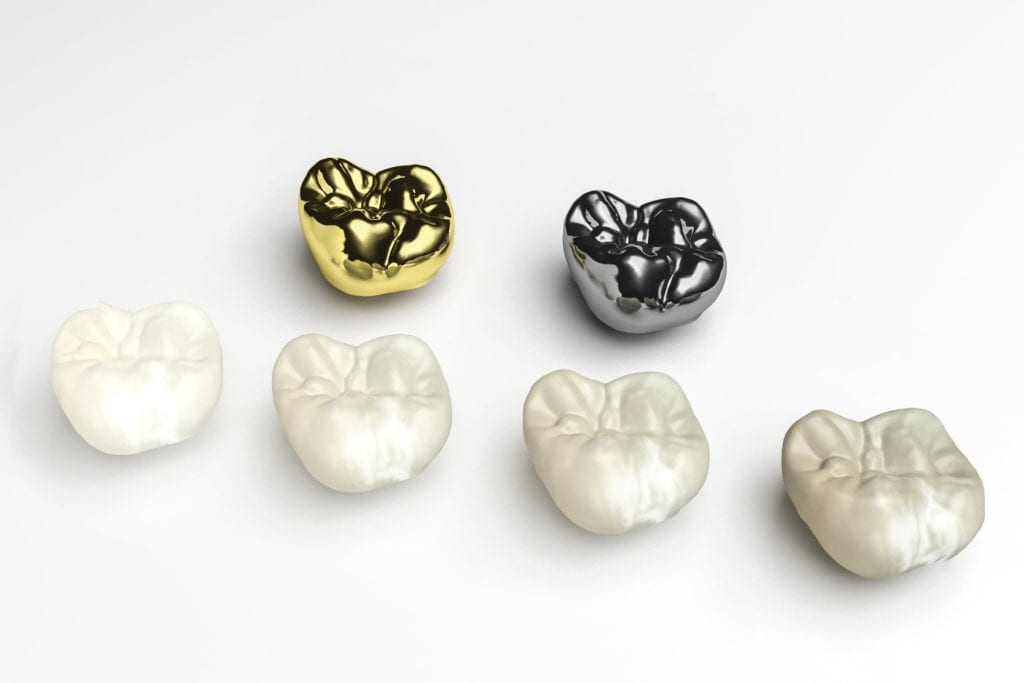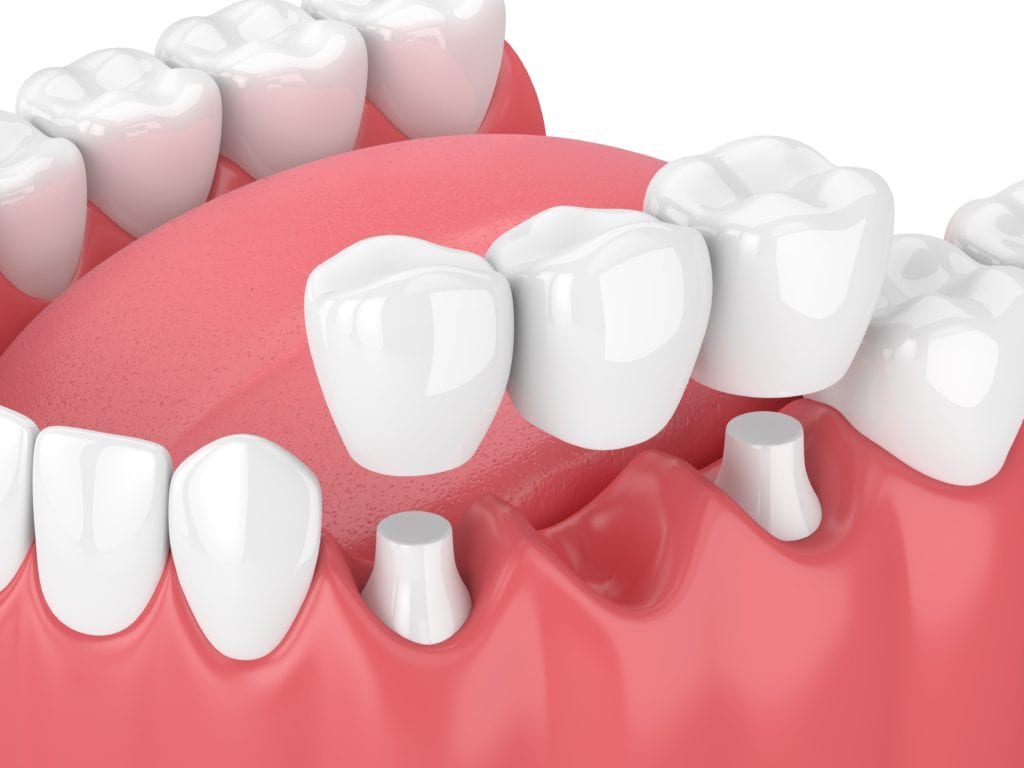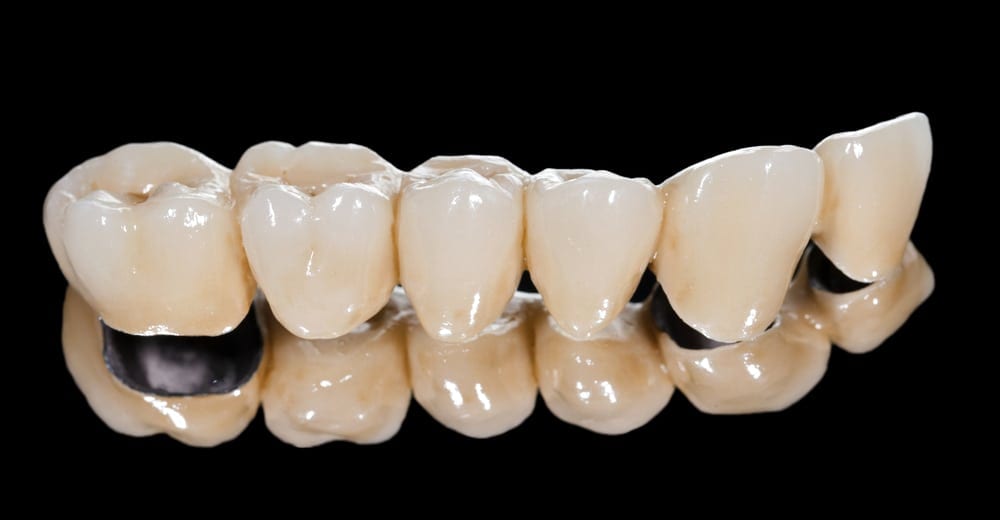Dental crowns are protective caps used to restore a single decayed or damaged tooth, while dental bridges are made up of multiple dental crowns and are used to restore missing teeth. In most cases, a dental crown is adhered over an existing tooth, but in some cases, it may also be used with a dental implant as a restoration method for a missing tooth. Dental bridges are most commonly composed of one dental crown on either side of the fake tooth used to fill the gap left by a missing tooth. However, as with dental crowns, there are instances when dental implants may be used instead.
Did You Know?
Dental crowns have been used all throughout history, starting with ancient Etruscan civilization. In that time, they used gold, ivory, and bone to fabricate dental crowns. Later in Southeast Asia, gold crowns became a sign of wealth, power, and status. Although dental crowns can still be made from gold (mixed with copper and other metals), modern crowns can be fabricated from a variety of dental materials.
Frequently Asked Questions:
Am I a candidate for a dental crown or bridge?
You may be a candidate for a dental crown if you have teeth whose natural structure has been significantly altered by decay or damage. You may also be a candidate for a dental crown if you have had a root canal or if you are having a single dental implant placed to restore a missing tooth.
You may be a candidate for a dental bridge if you have a single missing tooth, or multiple adjacent missing teeth, that are surrounded by otherwise generally healthy teeth. To place a dental bridge, it is essential that the teeth being used as anchor points are strong enough to support the bridge. You may also be a candidate for a dental bridge if you have multiple missing teeth and are using dental implants to support the bridge.
To find out if you are a good candidate for a dental crown or bridge, schedule a consultation with your Hemet dentist, Dr. Formica today.
Are there different types of dental crowns?
Yes, there are six different types of dental crowns.
Depending on your individual case, aesthetic preferences, and budget, one of the following options may be suggested by your dentist:
- Stainless Steel: stainless steel crowns are generally used for temporary use and are rarely suggested for permanent use. They are also commonly used to restore primary teeth in children.
- Metal: metal crowns can be made from different metals including platinum, copper, or gold. In some cases, base metal alloys can also be used. The most commonly used base metal alloys are cobalt-chromium and nickel-chromium.

- Porcelain Fused to Metal (PFM): PFM crowns are fabricated with both porcelain and metal. This allows for the aesthetics of porcelain and the strength of the metal.
- Porcelain: Porcelain crowns are entirely made of porcelain and contain absolutely no metal. This makes them an ideal choice for those with metal allergies.
- All-Resin: All-resin crowns are fabricated out of dental composite resin.
Are there different types of dental bridges?
Yes, there are four different types of dental bridges that your Hemet dentist may recommend:

- Traditional dental bridges are made using one or more fake teeth with a dental crown on either side acting as an anchor. This is the most commonly used type of bridge.

- Cantilever dental bridges are similar to traditional bridges, however, they are only anchored by a dental crown on one side instead of two. Because they can place too much strain on a single tooth, they are not often recommended.

- Maryland bonded bridges are also similar to traditional dental bridges, however, they use a metal framework instead of dental crowns to anchor the bridge. This means that the adjacent teeth remain as is and instead have the frame is fused to the back of the teeth.

- Implant-supported dental bridges are similar to traditional bridges, however, they use dental implants as anchors in place of dental crowns or metal framework. They are often used in cases with more than one missing tooth.
What can I expect when having a dental crown or bridge placed at my Hemet dentist office?
When having a dental crown or bridge placed, the affected teeth will need to be prepared prior to placing the restoration. During this process, you will be given a dental anesthetic to keep you numb. Teeth are prepared for dental crowns by removing enamel and reshaping the remaining structure. If a traditional bridge is being placed, both teeth on either side of the gap will need to be prepared. Once the affected teeth have been prepared, a dental impression is taken. This impression is sent to a dental lab so that they can fabricate a custom crown or bridge. Until the permanent restoration arrives, a temporary restoration will be placed to protect the teeth. After the permanent crown or bridge has been fabricated, it will be adhered into the mouth.


Recent Comments